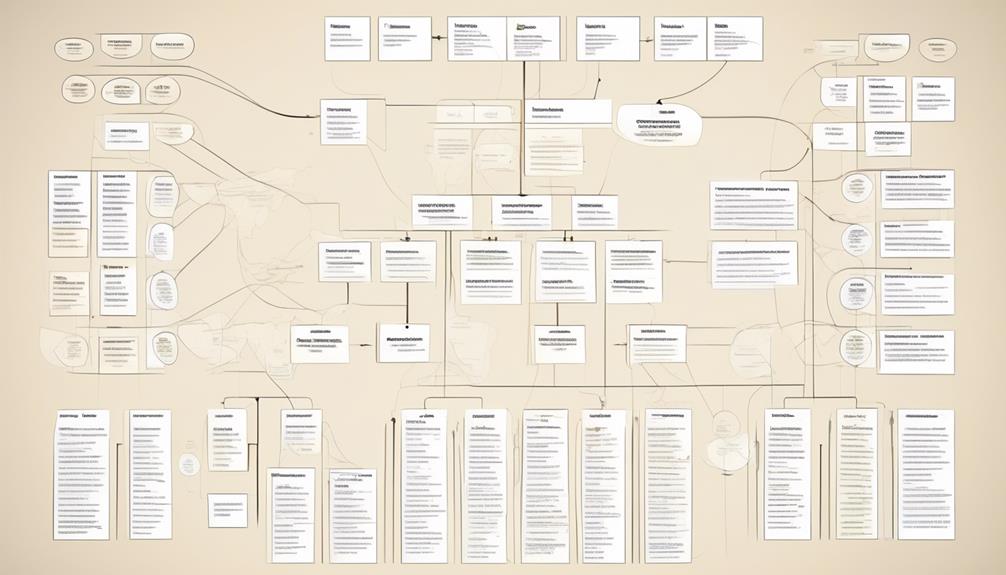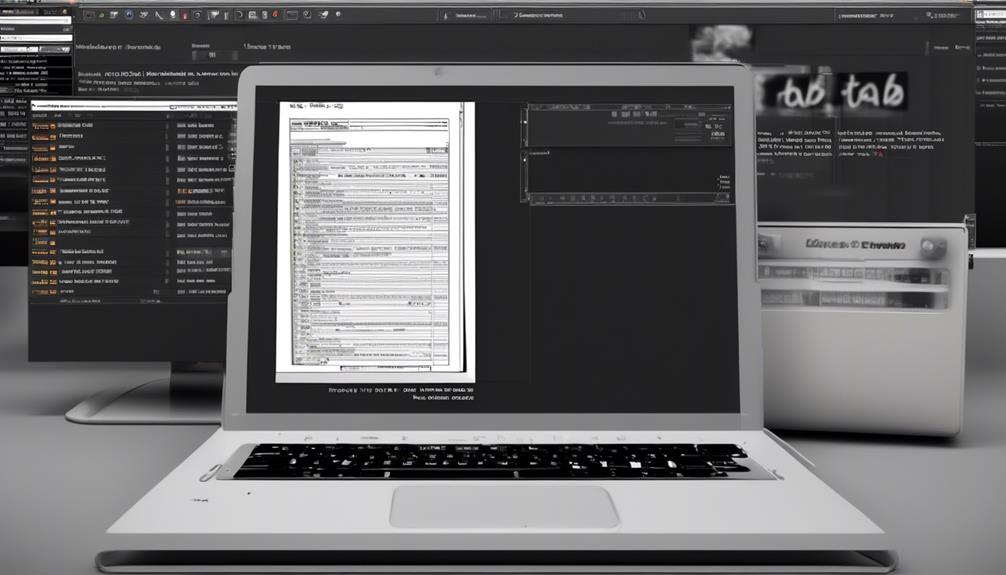The structure of the World Health Organization is a complex puzzle that deserves careful analysis.
As we unpack the layers of this global entity, it becomes evident that its organizational framework extends from its headquarters in Geneva to its regional and country offices around the world.
Yet, there is more to uncover about the governance, funding, and partnerships that shape the WHO's operations.
Join us as we unravel the intricate tapestry of the WHO's structure and gain a deeper understanding of its impact on global health.
Key Takeaways
- The World Health Organization (WHO) is headquartered in Geneva, Switzerland and operates in 150 countries through country offices.
- WHO's governance is guided by its 1948 Constitution and the World Health Assembly, which is the supreme decision-making body.
- WHO has six regional offices in Africa, Americas, Eastern Mediterranean, Europe, South-East Asia, and Western Pacific, which connect nations, tailor interventions to meet regional needs, and collaborate with governments to improve local health systems.
- WHO relies on contributions from member states and private donors for funding, and engages in partnerships with various entities to mobilize all parts of society for health advancement.
Organizational Overview
Incorporating global presence at the World Health Organization is facilitated by our headquarters in Geneva, Switzerland and operations in 150 countries through country offices.
As an International organization, WHO's structure is designed to ensure a coordinated response to global health challenges. The World Health Assembly, consisting of member states, is the supreme decision-making body. It sets the organization's priorities and adopts its budget.
Regional offices in 6 regions collaborate with governments and partners to improve local health systems, while the global office in Geneva is currently undergoing modernization. Additionally, WHO operates several other offices worldwide, focusing on different aspects of global health.
The organization's governance is guided by its 1948 Constitution, reflecting the core principles of health care. Notable achievements include leading the eradication of smallpox and near-eradication of polio.
This organizational overview showcases the intricate yet efficient structure that enables WHO to fulfill its crucial mission of promoting health, keeping the world safe, and serving the vulnerable.
Global and Regional Offices

The seamless coordination of global and regional efforts at the World Health Organization is exemplified by the operation of six regional offices located in Africa, Americas, Eastern Mediterranean, Europe, South-East Asia, and Western Pacific.
These regional offices play a crucial role in connecting nations and supporting member states in their respective regions, ensuring that global health efforts are tailored to meet regional needs. They collaborate with governments to improve local health systems and ensure equal access to a safe and healthy life for everyone.
The regional structure allows for tailored interventions and coordinated responses to health threats, including health emergencies. Each regional office has its own website providing region-specific information and resources, further facilitating the dissemination of crucial health-related information.
This regional approach aligns with the World Health Organization's mission to promote health, keep the world safe, and serve the vulnerable, making it a pivotal United Nations agency in championing global health.
Governance and Leadership
Responsible for overseeing the policy for the Organization's international health work, the Director-General of WHO, currently Dr. Tedros Adhanom Ghebreyesus, is elected for a 5-year term through a proposal and secret ballot process.
WHO's governance and leadership are crucial in advancing its mission as a United Nations agency dedicated to promoting health, improving access to healthcare, and ensuring the well-being of all people.
The World Health Assembly (WHA), consisting of 194 member states, serves as the decision-making body, focusing on specific health agendas and determining policies. This ensures that the organization aligns with the principles of the right to health and well-being for all, as adopted in 1948.
The Executive Board, accountable to the WHA, further supports governance and leadership by implementing its decisions and policies.
Additionally, WHO's headquarters, located in Geneva, along with its 6 regional offices and more than 150 country offices, play pivotal roles in coordinating health efforts and tailoring interventions to regional needs.
Such a cohesive governance and leadership structure enables WHO to effectively collaborate with governments, civil society, and international organizations to mobilize all sectors of society for health advancement.
Organizational Structure History

Established in 1948, WHO's organizational structure has evolved to coordinate health efforts globally through its headquarters, regional offices, and country operations. Over the years, the structure has been shaped by the organization's mission to ensure the highest attainable standard of health for all people.
The evolution of WHO's organizational structure can be understood through various key points:
- Member States: The World Health Assembly, consisting of 194 member states, plays a crucial role in governing WHO and shaping its policies.
- Contributions: Since 1951, WHO has been receiving financial and technical resources to support its international health work and promote universal health coverage.
- Global Response: Guided by its Constitution, WHO collaborates with governments, civil society, and international organizations to ensure the right to health and provide a global response to health emergencies, such as the current COVID-19 pandemic.
- Country Offices: With operations in 150 countries, WHO's country offices play a vital role in implementing its basic principles and strategies to achieve its mission.
This historical overview demonstrates how WHO's organizational structure has adapted to meet the evolving challenges in global health and continue its vital work.
Funding and Partnerships
Collaborating with various entities, WHO primarily relies on contributions from member states and private donors to fund its global health initiatives. The approved budget for 2022-2023 exceeds $6.2 billion, with the majority of funding stemming from voluntary contributions from Member States, United Nations organizations, philanthropic foundations, the private sector, and other sources. In its efforts to expand universal health coverage and advance public health worldwide, WHO engages in partnerships with governments, civil society, international organizations, foundations, advocates, researchers, and health workers. Emphasizing accountability as a core principle, WHO mobilizes all parts of society for health advancement. Below is a breakdown of WHO's funding sources for reference:
| Source | Percentage Contribution |
|---|---|
| Member States | 20% |
| United Nations organizations | 30% |
| Philanthropic foundations | 25% |
| Private sector | 15% |
| Other sources | 10% |
These contributions enable WHO to work towards its mission of promoting health, keeping the world safe, and serving the vulnerable.
Frequently Asked Questions
How Is the World Health Organization Governed?
We govern with a leadership structure led by the Director-General, oversee policy, and implement decisions.
Our World Health Assembly serves as the governing body, ensuring accountability and guiding our operational framework.
Member contributions and private donors fund our work, and we form external partnerships to enhance our impact.
Our organizational hierarchy is tailored to regional needs, and our decision-making process is guided by our 1948 Constitution.
How Does the World Health Organization Work?
Global impact drives WHO's work in disease prevention, healthcare systems, and public health.
International collaboration strengthens health regulations, emergency response, and health research.
Our role in shaping health policy and promoting health globally is pivotal.
Through regional and country offices, we enhance local health systems and foster partnerships for better health outcomes.
Our modernized Geneva headquarters serves as a central coordinating hub for effective and efficient international health efforts.
What Are the Parts of World Health Organization?
Regional offices play a crucial role in tailoring health initiatives to member countries' needs. They coordinate with member countries, support decision-making processes, and prioritize public health, disease prevention, and research.
Funding sources and global partnerships are vital for these initiatives. The staff structure is designed to efficiently carry out these priorities.
What Is the World Health Organization Model of Health?
When exploring the world health organization model of health, we see a comprehensive approach that encompasses the biomedical and social models, considering health determinants, disease prevention, and health promotion. This holistic perspective aims to address global health challenges, improve public health, and strengthen healthcare systems while striving for health equity.
WHO's multi-faceted strategy underscores the interconnectedness of individual and community well-being, emphasizing a proactive and inclusive approach to healthcare.
How Does the Organizational Structure of the World Health Organization (WHO) Impact Travel Bags for 2021/2022?
The organizational structure of the World Health Organization (WHO) does not directly impact the design or production of ultimate travel bags 2021. However, the WHO’s global health regulations may influence travel trends and regulations, which in turn can affect consumer demands for travel bags in 2021/2022.
Conclusion
In conclusion, the World Health Organization is structured with a global presence, regional offices, and country offices to support health systems worldwide.
With operations in 150 countries and six regional offices, WHO plays a crucial role in coordinating global health efforts.
It's interesting to note that WHO's country offices collaborate with governments and partners to improve local health systems, reaching millions of people in need of healthcare services.










